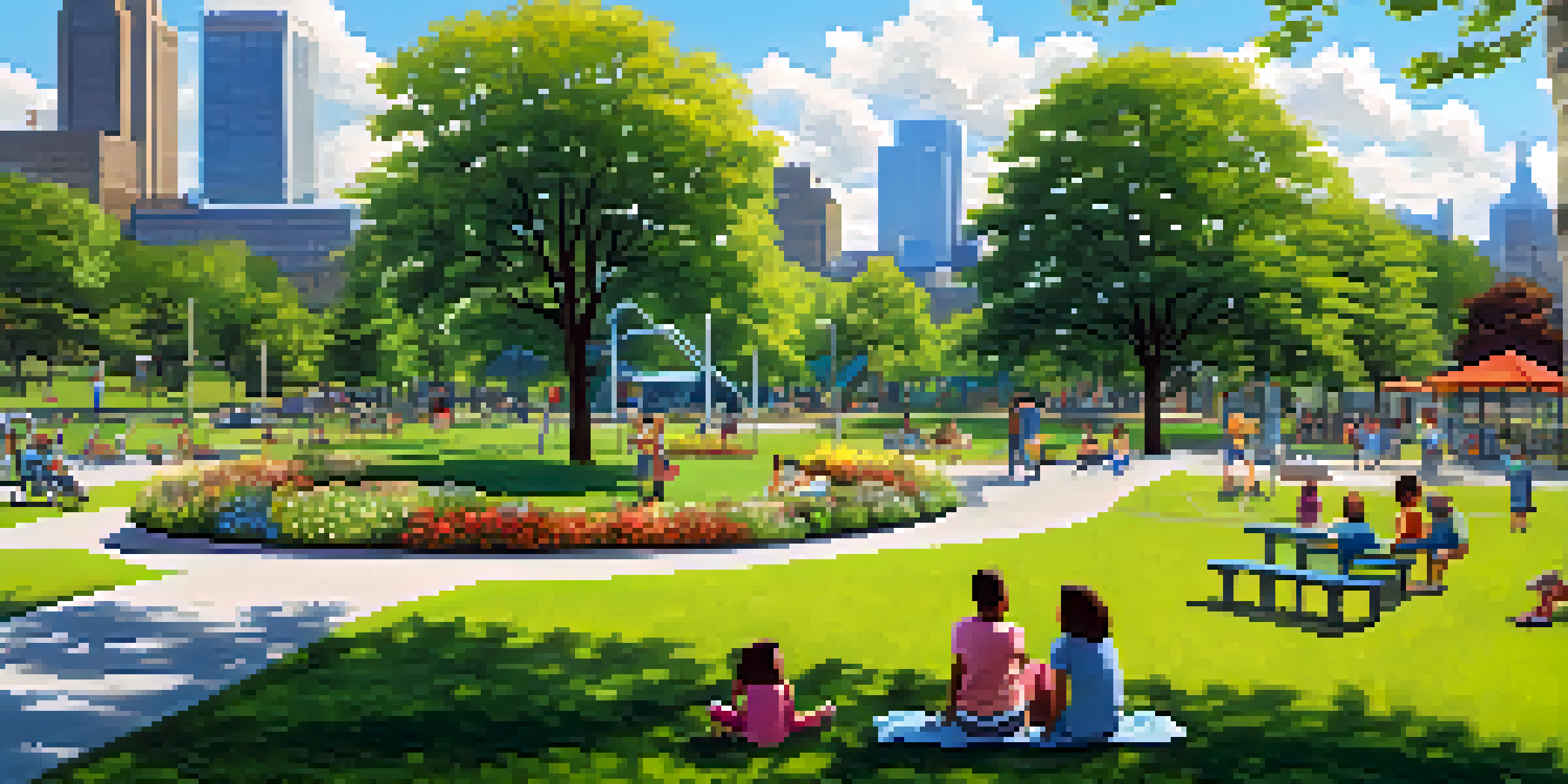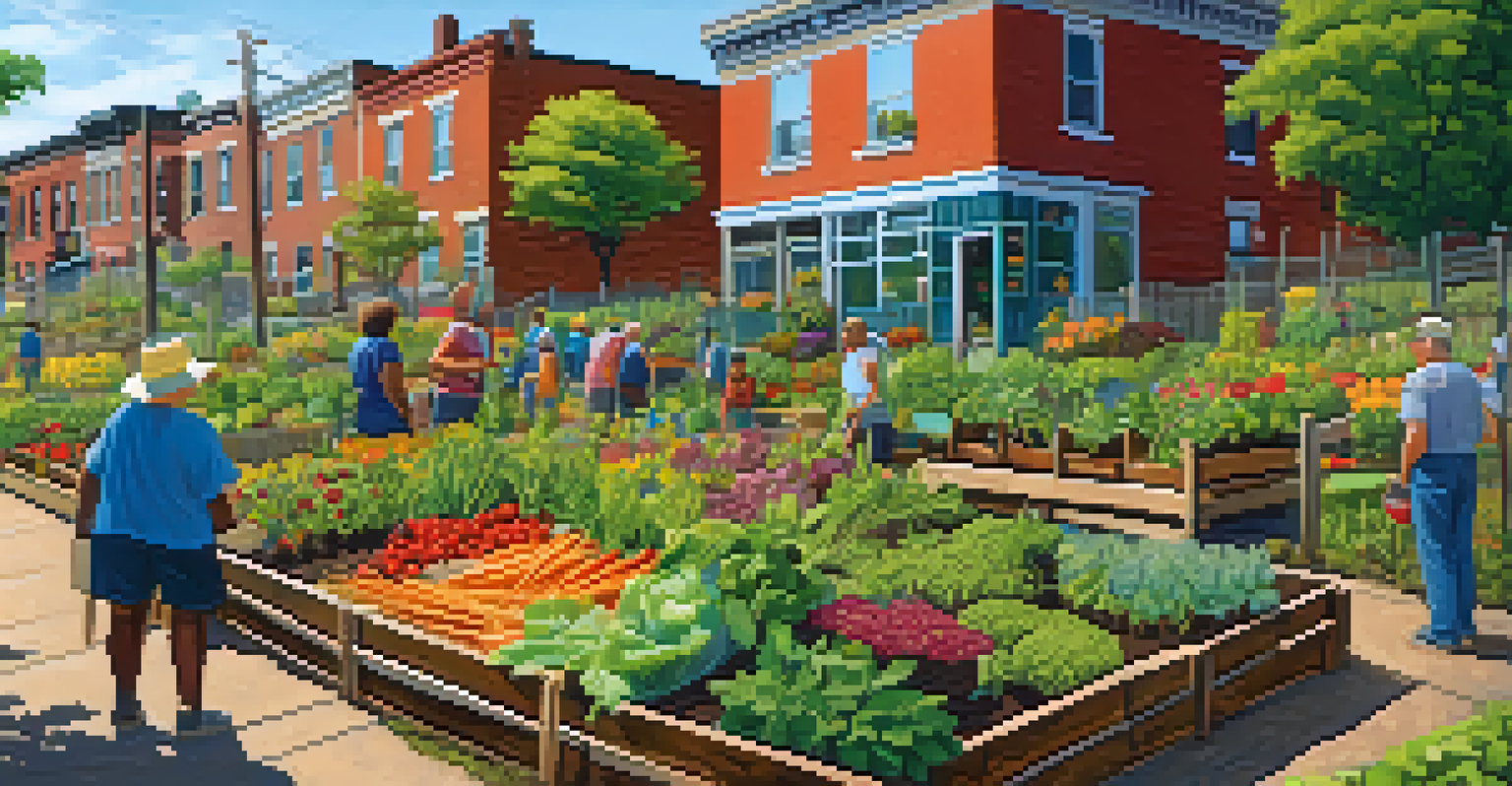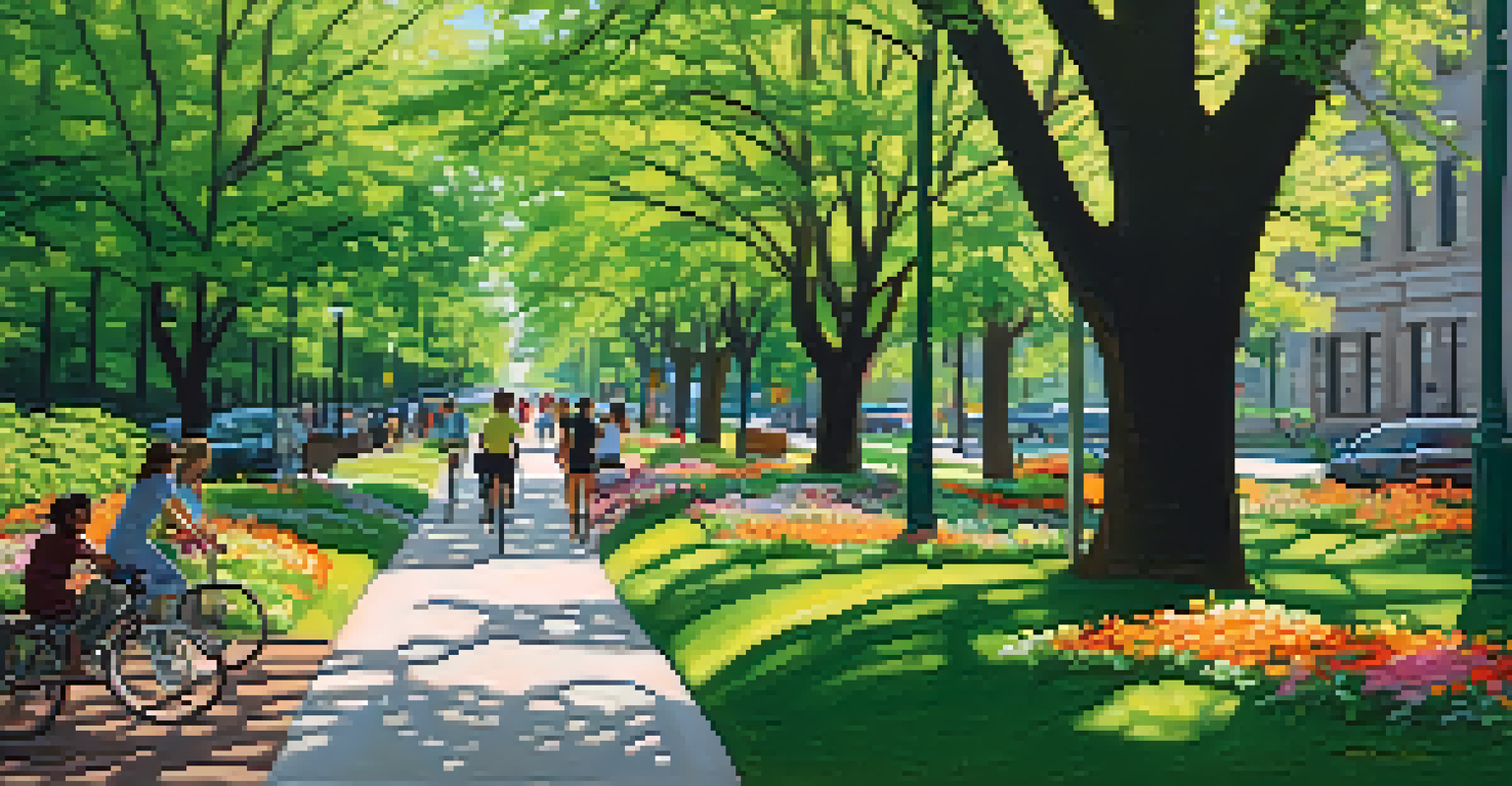Revitalizing Pittsburgh: Green Spaces and Community Engagement

The Importance of Green Spaces in Urban Areas
Green spaces are essential for urban environments, providing a breath of fresh air in concrete jungles. They serve as sanctuaries for both nature and people, offering places to relax, play, and connect with the outdoors. Research shows that access to parks can boost mental health, reduce stress, and improve overall well-being.
Nature does not hurry, yet everything is accomplished.
In Pittsburgh, these green spaces play a crucial role in enhancing the quality of life for residents. From the iconic Point State Park to the vibrant Schenley Park, these areas are not just beautiful; they are vital community hubs that encourage social interaction. Parks also foster physical activity, which is particularly important in combatting health issues that plague urban populations.
Moreover, green spaces contribute to environmental sustainability by improving air quality and supporting biodiversity. They help combat urban heat and provide habitats for various species, making cities more resilient to climate change. By investing in these areas, Pittsburgh is not just beautifying the city but also creating a healthier, more sustainable future for its residents.
Community Engagement: The Heart of Revitalization
Community engagement is pivotal in revitalizing urban areas, and Pittsburgh exemplifies this beautifully. When residents actively participate in decision-making processes regarding their neighborhoods, it fosters a sense of ownership and pride. This collective effort ensures that the needs and desires of the community are reflected in urban planning.

Neighborhood groups and local organizations in Pittsburgh have taken the initiative to transform underutilized spaces into vibrant community parks. Through volunteer programs and fundraising events, residents have come together to plant gardens, install playgrounds, and host events that celebrate local culture. These grassroots efforts not only beautify the city but also strengthen community bonds.
Green Spaces Enhance Urban Life
Access to parks in Pittsburgh boosts mental health, fosters community interaction, and promotes physical activity.
Additionally, engaging the community in the upkeep of these spaces encourages a culture of stewardship. When people feel connected to their environment, they are more likely to take care of it. This cyclical relationship between green spaces and community engagement is vital for creating a thriving urban ecosystem that benefits everyone.
Case Study: The Transformation of the Hill District
The Hill District in Pittsburgh has undergone a remarkable transformation through community-led initiatives and the development of green spaces. Once an area facing significant economic challenges, local residents have rallied to revitalize their neighborhood by focusing on sustainability and inclusivity. This grassroots movement has resulted in new parks and community gardens that not only beautify the area but also provide fresh produce to local families.
The best time to plant a tree was twenty years ago. The second best time is now.
One of the standout projects is the Hill District Community Garden, which serves as a model for urban agriculture. Here, residents come together to grow fruits and vegetables, promoting healthy eating while fostering community spirit. This initiative has not only increased access to nutritious food but also created a gathering space where friendships and collaborations can flourish.
The Hill District's revitalization demonstrates the power of community engagement in shaping a better future. By prioritizing green spaces and involving residents in the process, Pittsburgh is paving the way for other neighborhoods to follow suit, showcasing that collective action can lead to transformative change.
The Role of Local Government in Supporting Green Initiatives
Local government plays a crucial role in supporting green initiatives that benefit communities. In Pittsburgh, the city has committed to increasing green spaces and promoting sustainability through various programs and policies. This support is essential in creating a framework that encourages community involvement and investment in local parks.
Policies that prioritize green infrastructure, such as green roofs and rain gardens, help manage stormwater while enhancing the urban landscape. By integrating nature into the city’s infrastructure, Pittsburgh is not only improving aesthetics but also addressing environmental challenges. This proactive approach serves as a model for other cities looking to balance urban development with environmental stewardship.
Community Drives Urban Revitalization
Pittsburgh residents are transforming underutilized spaces into vibrant parks through grassroots initiatives and active engagement.
Furthermore, local government can facilitate partnerships between community organizations and businesses, creating opportunities for funding and resources. By supporting these collaborations, Pittsburgh ensures that revitalization efforts are sustainable and inclusive, allowing all residents to benefit from the city’s green initiatives.
Highlighting Successful Community Programs and Events
Pittsburgh is home to numerous community programs and events that celebrate green spaces and encourage engagement. Events like the Pittsburgh Parks Conservancy's 'Parks and People' program bring together volunteers from all walks of life to participate in park clean-ups, tree plantings, and educational workshops. These initiatives not only improve local parks but also foster a sense of camaraderie among participants.
Another notable program is the 'Greenfield Community Initiative,' which focuses on enhancing local parks through art and culture. By organizing art installations and cultural events in green spaces, this initiative transforms ordinary areas into vibrant community centers. Such programs highlight how creativity and community pride can breathe new life into urban environments.
These successful programs and events demonstrate the power of collaboration in revitalizing Pittsburgh. When residents, organizations, and local government come together, the result is a thriving community that values its green spaces and actively participates in their enhancement.
The Impact of Green Spaces on Mental Health
Green spaces significantly impact mental health, providing a refuge from the hustle and bustle of urban life. In Pittsburgh, access to parks and nature has been linked to reduced stress levels and improved mood among residents. These natural environments offer a space for relaxation and reflection, allowing individuals to recharge amidst the chaos of daily life.
Studies have shown that spending time in nature can lower anxiety and depression, making green spaces vital for the overall well-being of the community. Parks in Pittsburgh, like Frick Park and Allegheny Commons, serve as popular spots for walking, jogging, and meditative practices. These activities encourage physical movement, which is closely tied to mental health improvements.
Local Government Supports Green Initiatives
Pittsburgh's local government is committed to increasing green spaces and fostering partnerships that enhance environmental sustainability.
Pittsburgh's commitment to expanding green spaces is a testament to the city's understanding of these benefits. By investing in parks and community gardens, the city not only enhances its aesthetic appeal but also prioritizes the mental health of its residents, creating a more balanced and healthy urban environment.
Looking Ahead: The Future of Pittsburgh's Green Spaces
As Pittsburgh continues to embrace sustainability and community engagement, the future of its green spaces looks promising. The city is actively planning new parks, enhancing existing ones, and fostering community initiatives that prioritize environmental health. This forward-thinking approach ensures that green spaces will remain a cornerstone of urban life in Pittsburgh.
Innovative projects, such as the development of green corridors and urban forests, are on the horizon. These initiatives aim to connect different neighborhoods through a network of green spaces, making nature accessible to all residents. By creating these pathways, Pittsburgh not only enhances mobility but also strengthens the community's connection to nature.

In summary, the future of Pittsburgh's green spaces is bright, driven by community involvement and a commitment to sustainability. As residents continue to engage with their environment and each other, Pittsburgh is set to become a leading example of how urban areas can thrive through green initiatives and community spirit.